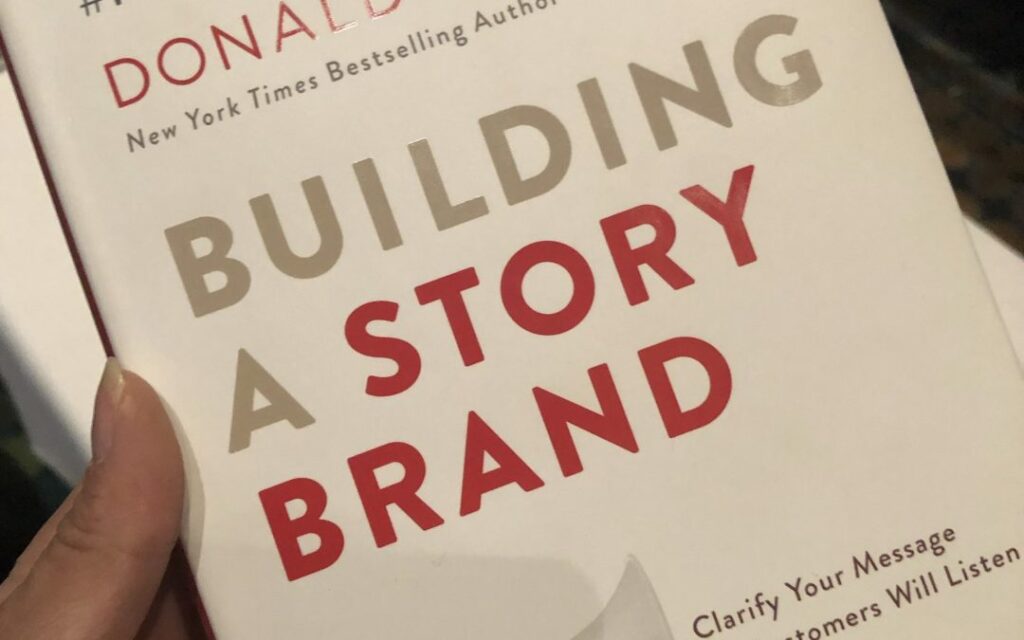Earlier this year, I had the pleasure of attending the StoryBrand two-day workshop in Nashville, Tennessee. Donald Miller and his team do a fantastic job of helping business professionals from across the country clarify their message through his proprietary StoryBrand framework. Below are some of the key takeaways from the workshop.
The Human Brain is designed to do two things: survive and thrive and conserve calories.
According to Miller, clarity is associated with survival. People buy what they understand in the marketplace. If your message is complicated, confusing, or technically complex people will disregard what may make your product or service great. The human brain is designed to conserve calories. If your message is complicated, the brain has to work extra hard to process that information and often shuts off or moves on to something else.
With regards to messaging, Simon Sinek author of Start With Why, describes it best when he said, “People don’t buy WHAT you do, they buy WHY you do it.” Sinek gives the example of Apple and how they are more than a computer company. Apple delivers a clear message of technological alternatives it provides and why those products may make your life easier. Apple compared to Dell has positioned itself in the marketplace as an innovative technology company, while Dell has fallen short with the positioning of WHAT they do as a computer company.
At the end of the day, clarity sells.
The Problem is the Hook to Every Great Story
Digital storytelling at LuckyTamm Digital Marketing (LTDM) is part of our ethos and what makes up the fabric of our work. We all love stories, whether it’s Old Yeller or A Christmas Story humans love characters, problems, and resolutions — or as Miller explains closing the story loop.
All good stories begin with conflict… cue Mel Gibson aka William Wallace in Braveheart, “They can take our lives, but they can never take our freedom!” In business, your customers especially, have some type of problem they’re trying to solve. As the StoryBrand framework describes it, a character has a problem and then meets a guide (you), who gives them a plan, calls them to action that leads to success or failure.
Talk About Problems
As Miller and the StoryBrand team teach, there are three types of problems: internal, external and psychological. Your marketing messaging should hit all three pain points and let people know how much better their life will be once they have your product or service.
External problems are related to the actual physical/tangible problems your customer or character, often experiences. Internal problems relate to the state in which your customer feels internally (e.g. stuck, stalled, etc.). Philosophical problems are where your marketing messages really count, in my opinion. This is the FOMO (fear of missing out), that if they had X product/service, they would be able to experience a new level of joy/happiness in their life.
Good marketers as Miller and his team explained throughout the workshop, unpack all three levels of problems and invite the character into their story as the guide on the path to success.
Be the Guide

Contrary to what I thought would be the next piece of advice as a story navigator, Miller suggests as marketing and business professionals YOU have the distinguished duty to be the guide, NOT the hero. Your job is to couple empathy with authority to help your customer win the day. Let me repeat that, your job is to help your customer win the day. It’s about them and leading them to a successful outcome. Through careful planning, as the guide, your task is to set the stage for your customers so they understand how to navigate their industry with confidence and clarity.
As we close out 2019, our goal at LTDM for the upcoming 2020 year is to continue to help aka guide our clients to become better at these takeaways. Brand storytelling is not only an industry, but it’s also a work of art. When done well, the brain doesn’t have to work twice as hard to process the content, but rather gravitate toward it. In 2020, let us help you tell your story. Schedule your free assessment today.

